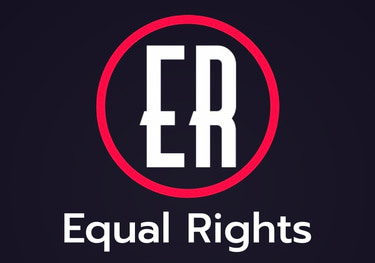The Importance of Intersectionality in Achieving Equal Rights
Kylo B
4/19/2024
The Importance of Intersectionality in Achieving Equal Rights
Intersectionality is a critical concept that underscores the interconnected nature of social categorizations such as race, gender, sexual orientation, class, and ability.
Coined by Kimberlé Crenshaw, intersectionality emphasizes that individuals experience overlapping and interdependent forms of discrimination and privilege.
Understanding intersectionality is essential for achieving true equality and addressing systemic injustices that affect diverse communities.
Understanding Intersectionality
Intersectionality recognizes that individuals possess multiple identities that intersect and interact with one another, shaping their experiences and social realities.
For example, a Black woman may face unique challenges that stem from both racial discrimination and gender bias, which cannot be fully understood or addressed by focusing solely on race or gender independently.
The Limitations of Single-Issue Approaches
Traditional approaches to social justice often prioritize single-issue advocacy, focusing exclusively on one aspect of identity or oppression.
However, these approaches fail to account for the complex and multifaceted nature of discrimination.
Ignoring intersectionality can perpetuate inequalities and exclude individuals whose experiences fall at the intersections of multiple marginalized identities.
Intersectionality & Equal Rights
Achieving equal rights requires a comprehensive understanding of intersectionality. Laws and policies aimed at promoting equality must consider the diverse and intersecting identities of individuals to ensure that no one is left behind.
For instance, employment discrimination laws should address not only gender-based discrimination but also discrimination based on race, disability, or other intersecting factors.
Examples of Intersectional Discrimination
Intersectionality highlights the unique forms of discrimination faced by individuals with multiple marginalized identities. LGBTQ+ people of color, for example, may experience discrimination that is distinct from that faced by either LGBTQ+ individuals or people of color alone.
Understanding these intersecting dynamics is crucial for developing targeted interventions and support.
Challenges in Addressing Intersectionality
Recognizing and addressing intersectionality can be challenging due to the complexity of intersecting identities and power structures.
It requires a shift from a single-focus approach to a more holistic and inclusive framework that acknowledges the interconnectedness of social inequalities.
This shift requires education, dialogue, and intentional efforts to amplify the voices of marginalized communities.
Principles of Intersectional Activism
Intersectional activism emphasizes solidarity and coalition-building across diverse communities.
By recognizing shared struggles and amplifying intersectional perspectives, activists can advocate for policies and initiatives that promote justice and equity for all. Intersectional activism fosters collaboration and mutual support, challenging systems of oppression at their intersections.
Intersectionality is a vital framework for understanding and addressing inequality in all its forms.
By recognizing the complexity of intersecting identities and experiences, we can develop more effective strategies for achieving equal rights and social justice.
Embracing intersectionality requires a commitment to inclusivity, empathy, and collective action to create a world where everyone's dignity and humanity are respected, regardless of their intersecting identities.
Only through an intersectional lens can we truly advance towards a society that upholds equal rights and opportunities for all individuals.
